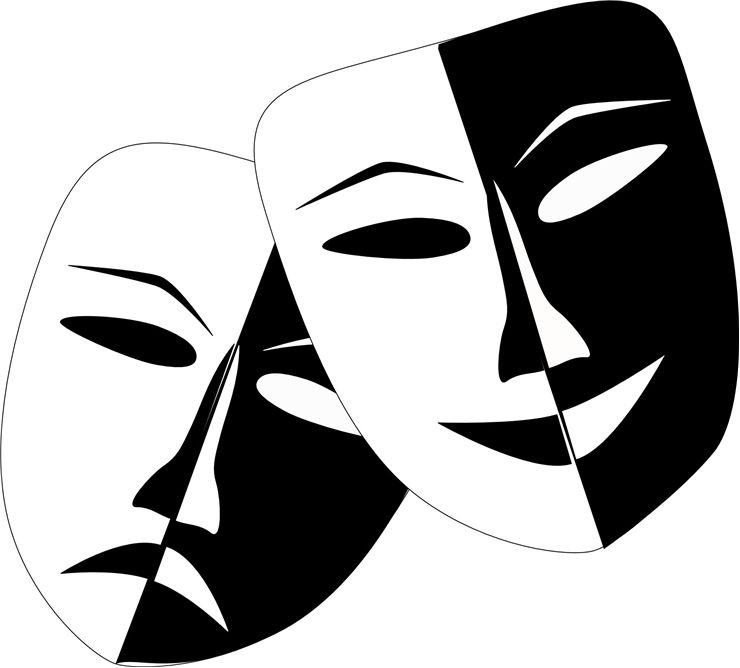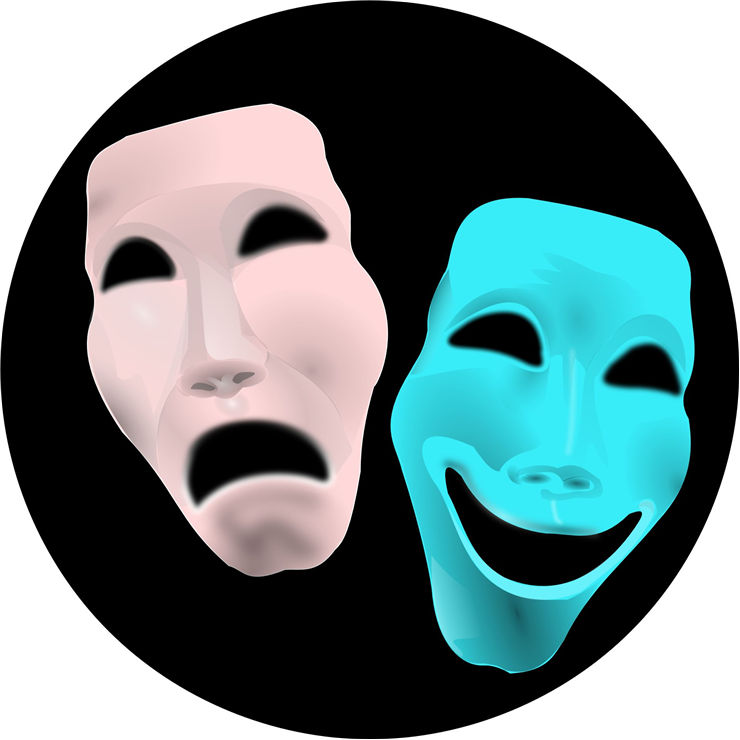Theater Masks - Different Types of Theatrical Masks
Since the dawn of theater, many cultures from around the world elected to represent actors as other persons of beings, enabling performances that were much more striking and effective. Theater traditions in both West and the Asia adopted masks as one of the most important tools that could be used on stage, often creating plays that were fully acted by masked actors. Most notable example of this approach was born in ancient Greece, specifically the state-city of Athens where culture, poetry, and art were valued as an important foundation of daily lives. Stage drama received special care, enabling quick popularization of three main types of plays– tragedy, comedy, and satyr play (comedic satire).
The earliest example of masks was used for various religious ceremonies such as rituals, celebrations, festivals, rites of passages, recreations of folk stories, pageants, and many other ceremonies of ancient origins. Some of the older masks used in religious healing date up to 3500 years ago in Ancient China. Traditions of those events translated well into the creation of organized use of masks in China around 13th century AD. Murals and paintings from that time described the use of various masks during ceremonies performed by sorcerers, exorcism masks and theater performances that were at first performed only to royalty and nobility.

Modern stage theater appeared in Europe in the 5th century BC in Ancient Greece. All theater masks from that early period of history were lost to time because they were not created to be durable, and were often offered to the fire as offering to the gods at the end of the celebration. Much later, Athenian actors used now famous happy masks of Comedy and sad masks of Tragedy to celebrate gods (especially during a festival called Dionysia, which honored the Greek god Dionysus, god of fertility, harvest, wine-making, religious ecstasy, myth, and theater) created from more durable materials. They exported their craft to all colonies of Athens, popularizing theater and mask-use across central Europe where new users used masks for many other purposes. For example, marks were very popular in neighboring civilization of Ancient Rome, where masks of many kinds were used not only in theater but also in religious ceremonies such as funerals where professional actors wearing masks would recreate deeds from the life of the deceased and his ancestors.
In Asia, modern traditions of famous Japanese Noh theater formed in the 14th century by famous author and musician Kan'ami and his son Zeami. In this heavily codified and regulated art form that is still performed today, single theater play consists of five musical drama segments with shorter comedic plays being played in between of them. Masks that are here used for roles vary widely, reaching a number of over 450 different models. The most popular ones are those of women, children, ghosts (both good and bad ones) and old people, covering all genres, ages, and emotions.
Many centuries after the fall of Ancient Greece and Rome, the tradition of mask use in theater and public ceremonies endured in continental Europe. Renaissance saw the resurgence of mask use not only by the nobility and royalty at balls and nightly gatherings but also at professionally performed masques, ballet de cour (events that eventually morphed into a form of modern ballet) and even comedic performances of Commedia dell'arte that is precursor to the modern “clown” character. Regular theater production from medieval, renaissance and Victorian ages all used masks to some extent, especially in plays that featured puppetry and other forms of tools that elevated visual storytelling. In late 19th and 20th century, avant-garde art movement gave new life to theater masks culture via several distinct art movements that became very influential in Europe and America (traditional avant-garde art, Naturalism, Oriental Theatre, modern dance, modern mime and others).

The rise of the cinema film also enabled masks to be used in an entirely different art form where they were used to portray many types of otherworldly characters, persons who wanted to become symbols, changes of persona and horror beings. Some of the most famous movies that centered on masked characters are Les Vampires, Donnie Darko, The Mask, The Phantom of the Opera, The Man in the Iron Mask, Vanilla Sky, V for Vendetta, Eyes without a face, Scream, Friday the 13th, Halloween and Star Wars.


